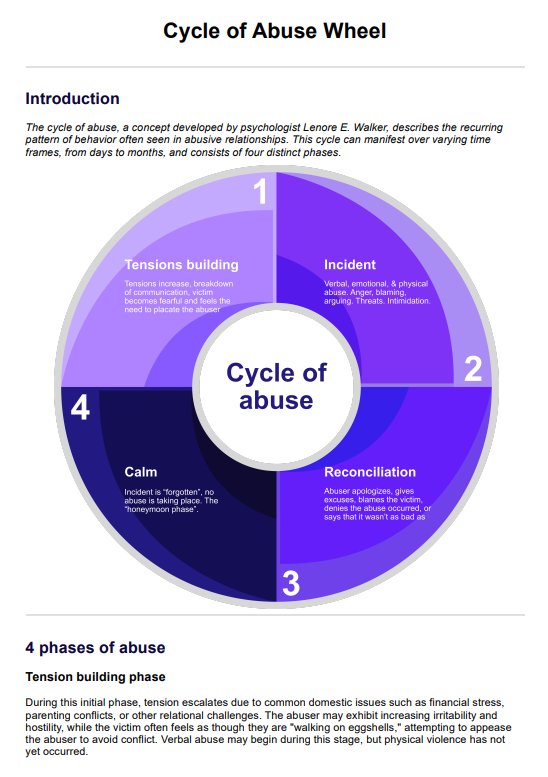The cycle of abuse consists of four stages: tension-building, acute battering, honeymoon, and calm. This repeating pattern keeps victims trapped as tension begins, abuse starts, temporary remorse follows, and the cycle resets.

Cycle Of Abuse Wheel
Access Carepatron's free Cycle of Abuse Wheel PDF for clinical use. Identify patterns, support interventions, and enhance patient care today.
Cycle Of Abuse Wheel Template
Commonly asked questions
Common signs include verbal abuse, silent treatment, emotional manipulation, financial control, and physical violence. Victims often feel isolated, fearful, and unable to break free due to ongoing psychological and emotional distress.
Abusive relationships severely impact mental health, leading to anxiety, depression, PTSD, and low self-esteem. The prolonged exposure to domestic abuse can cause emotional numbness, learned helplessness, and difficulty forming healthy relationships.
EHR and practice management software
Get started for free
*No credit card required
Free
$0/usd
Unlimited clients
Telehealth
1GB of storage
Client portal text
Automated billing and online payments











